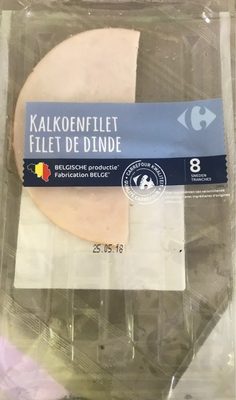Filet de dinde - Carrefour - 150 g
Important note: this product is no longer sold. The data is kept for reference only. This product does not appear in regular searches and is not taken into account for statistics.
This product page is not complete. You can help to complete it by editing it and adding more data from the photos we have, or by taking more photos using the app for Android or iPhone/iPad. Thank you!
×
Some of the data for this product has been provided directly by the manufacturer Carrefour.
Barcode: 5400101183247 (EAN / EAN-13)
Quantity: 150 g
Packaging: Plastic
Brands: Carrefour
Categories: Meats and their products, Meats, Prepared meats, fr:Charcuteries cuites, Poultry hams, Cooked turkey breast slices
Stores: Carrefour
Matching with your preferences
Environment
Carbon footprint
Packaging
Transportation
Report a problem
Data sources
Product added on by francisco
Last edit of product page on by org-carrefour.
Product page also edited by autorotate-bot, cyn, date-limite-app, ecoscore-impact-estimator, kiliweb, moon-rabbit, openfoodfacts-contributors, packbot, roboto-app, scanbot, teolemon, yuka.MJFhHPjUFeseIvbJ_ZMugSmySsHAL9x3IXwCog, yuka.UkxnNk5ZSXhvL3dHb3ZNbjRDck5wNHNxM2FHWmVWT1lJZkJPSVE9PQ, yuka.WUpBbkNvNE91L1VCaFBBUjRCM0gyZTh2MTVyNFlHaXVBZnM2SUE9PQ.










